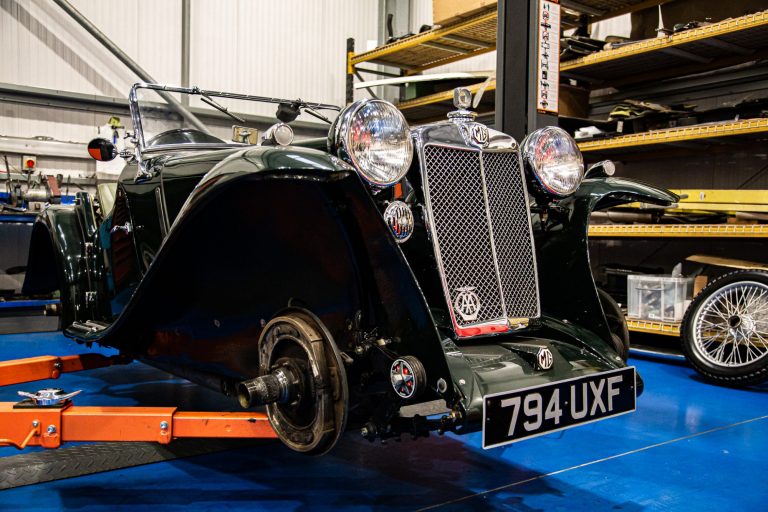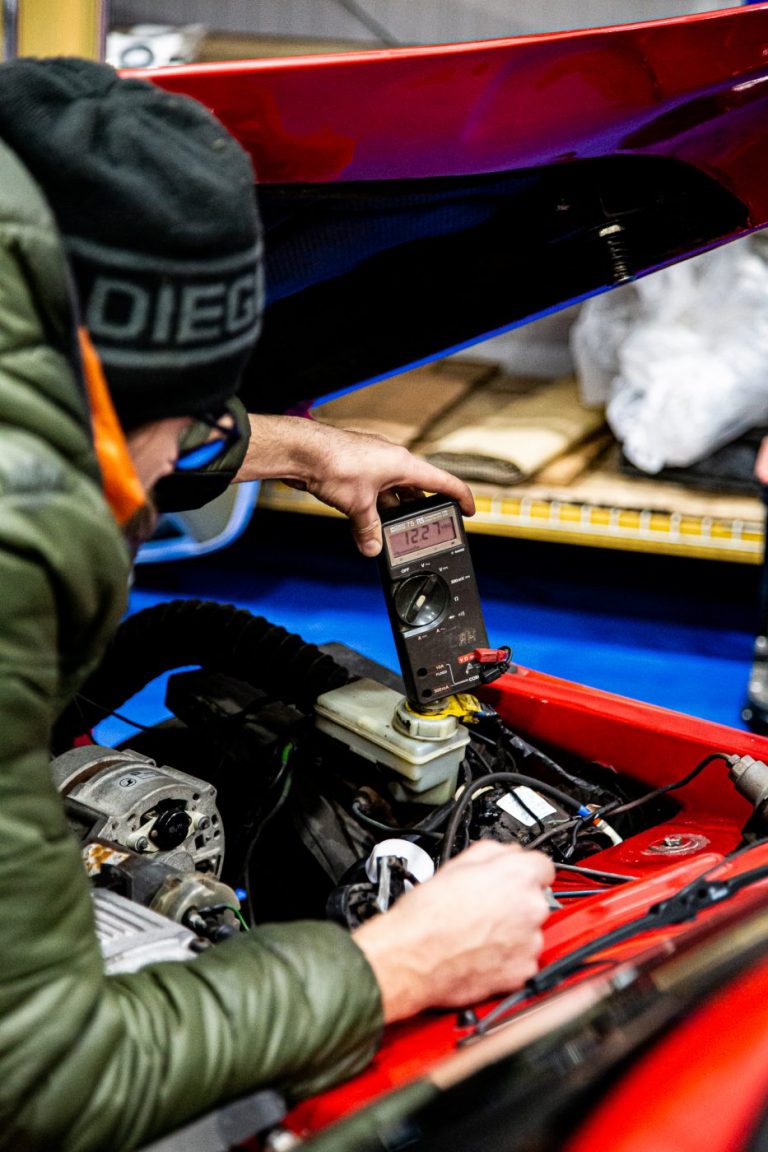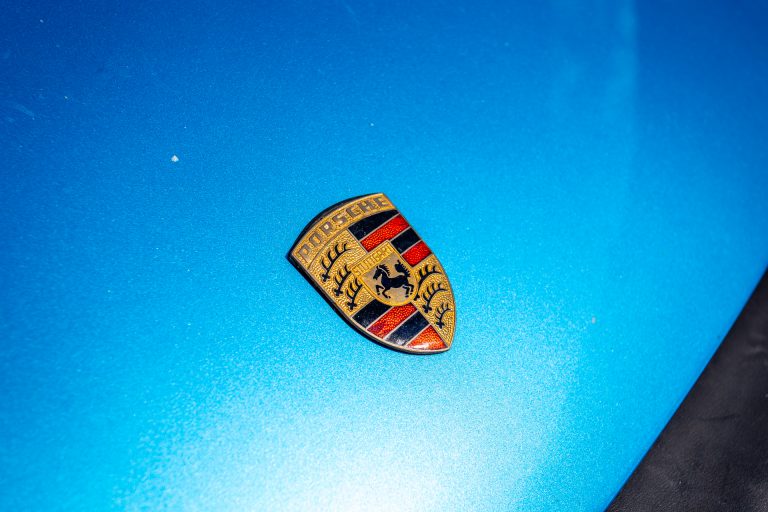
The Woman Behind the Name – Remembering Hazel Chapman
She was the inspiration behind the name Lotus. A nickname from her husband. A powerhouse alongside its enigmatic founder and adored by all who knew


She was the inspiration behind the name Lotus. A nickname from her husband. A powerhouse alongside its enigmatic founder and adored by all who knew

The 1934 MG PA Midget which belongs to our Director, Gordon, is in the workshop for our in-house teams to tackle the next jobs. The

The 1989 TVR S2 which was won through Bridge Classic Cars Competitions has left the secure storage facility, The Hangar, on its way to its

James Dean was one of the brightest stars of 1950s Hollywood. With dashing good looks and an air of charm and ruggedness, he captured the

It’s been a pleasure having this 1968 Jaguar MkII 2.4 in the Bridge Classic Cars workshop. Our in-house restoration technicians have been hard at work

The 1934 Riley Lynx is in the Bridge Classic Cars workshop today to begin work on the list of jobs that need doing on this
She was the inspiration behind the name Lotus. A nickname from her husband. A powerhouse alongside its enigmatic founder and adored by all who knew her. Today, we learned of the passing of Hazel Chapman. Wife of Lotus Founder Colin Chapman.
Although, she had a career away from her husband’s reputation. Hazel was an accomplished driver in her own right and was a sharp-witted and savvy businesswoman who many believe was a key influence on the development and birth of Lotus Cars. To the point where Lotus Cars actually began in a garage owned by Hazel’s parents in North London where the Mk1 was born. However, during Colin’s mandatory time in the RAF, Hazel would take over the actual construction of the next generation, the Mk2.
During her time surrounded by some of the greatest Formula One drivers of all time including the likes of Clark, Senna and Andretti, Hazel formed a bond and love for her drivers and everyone involved in the team had nothing but respect and adoration for Mrs Chapman by all accounts. She was also instrumental with setting up Dog House, an all-female motorsport club run for and by women to support the interests of the blossoming female driver movement.
However, after Colin Chapman’s untimely death in 1982, she began to take more of a back seat in the running of Lotus Cars. But even to this day, Lotus carried on the tradition of Hazel Chapman signing off every single road car all the way from the beginning to the introduction of Evija.
Hazel Chapman was a key and influential figure in not only the history of Lotus Cars but of the enthusiasm around driving and its accesibilityno matter of gender or age. A true trailblazer and pioneer.
From all of us here at Bridge Classic Cars, we wish to send our deepest condolences to all those who knew this incredible woman.
The 1934 MG PA Midget which belongs to our Director, Gordon, is in the workshop for our in-house teams to tackle the next jobs.
The first is our technicians have removed the hubs on the classic sports car so that our amazingly talented in-house paint team can get them to look as good as new for the car. This also gives our restoration technicians the chance to inspect and clean the hubs and spindles on the MG.
Another job on the list was to look into the battery of the car. Our team have been working on a way of better securing it into the car.
The 1989 TVR S2 which was won through Bridge Classic Cars Competitions has left the secure storage facility, The Hangar, on its way to its new home with its new owner, Jarlath. But, before it goes anywhere our in-house restoration technicians just want to check something.
When the car was pulled out of The Hangar, the alternator light was showing on the dash. This unit had been replaced during its preparation so Tom and John decided to go through and double-check the charging system. Methodically, our restoration teams worked through each component and wire.
After investigating, John and Tom found that one of the connectors had been slightly dirty/corroded was the cause of the light on the dashboard of this vibrant red sports car. After this had been cleaned and tested, all was ok and ready for delivery.
James Dean was one of the brightest stars of 1950s Hollywood. With dashing good looks and an air of charm and ruggedness, he captured the hearts of movie-goers within the span of his tragically short career. What the public may not have known, was his love of speed. During his short career, he had amassed an impressive stable of sports and racing cars which he would regularly exercise on the public roads which would sadly be his undoing many believe.
On September 30th 1955, Dean had intended to take his latest purchase to a race in Northern California. However, before he had even begun his journey there were signs of something impending. Famously, the legendary actor Alec Guinness would meet Dean shortly after he had taken delivery of his Porsche Spyder. Guinness would later comment in his diary that the car felt ”ominous” and ”looked sinister” while at the time claiming to have said to the young actor ”… if you get in that car, you will be found dead in it by this time next week”. A sense of foreboding drove itself deep into the core of Guinness as his friend laughed it off, got into his car and drove away.
The car had been painted by a legendary signwriter and car stylist named Dean Jeffries who emblazoned its flanks with the racing number 130 and the now infamous nickname for the sports car, Little Bastard. This was while the car was being prepared by James Dean and his mechanic Rolf Wuterich in anticipation for that weekend’s Salinas Sports Car Races in California. Although the original plan had been to tow the 550 Spyder to the race, it was decided it would be street driven to the race to give the young actor more time behind the wheel and to help break in the new engine before it would be pushed even harder on the race track over the coming weekend. On the Friday, the team set out with legendary Hollywood stuntman Bill Hickman driving his pickup truck and trailer trying to keep up with the exotic European racer. Dean was at the controls of the 550 while his mechanic Wulterich sat next to him to keep an eye on the health of the delicate race car.
During that trip, Dean would be pulled over by the police and issued with a speeding ticket. Another omen that this trip maybe should have been put on its trailer for the rest of the journey. However, after taking the ticket, Dean fired up his Porsche and kept going…
Out on the flat desert plains sits an intersection. The convergence of two stories would happen in this space and this time which would change history from that point on and began the legend of the Dean Spyder.
While turning off the highway at around 85MPH, Donald Turnupspeed’s Ford Tudor suddenly turned into the path of the small, fast Spyder. Although the 550 Spyder is known for being lightweight and not particularly overpowered, it managed to send the Ford Tudor almost 40 feet back from the scene of the impact. Wulterich was thrown from the car on impact, and the young actor who had been at the helm at the time of the accident had passed before they reached the hospital with his body at 620PM that night.
Despite the insurance company investigating the crash and then assessing the car, determining it to be a total loss, it was actually bought from a salvage yard and parted out for various street and race cars. But, it would appear something would follow any pieces related to the events of September 30th 1955.
The man who bought the remains of the 550 Spyder was an avid racer himself. William Eschrich raced a Lotus IX in local California sports car races, but from the remains of Little Bastard he would remove the engine for his own use. With so many spares he would also lend the gearbox and some of the suspension parts to his friend and fellow racer Troy McHenry. Here begins the notion of a curse attached to anyone or anything associated with the Dean Spyder. In the 1956 Pomona Sports Car Race, Eschrich and McHenry were competing. When out of nowhere, something went wrong. Eschrich’s Lotus crashed and completely destroyed the car but its owner and driver would survive the horrific impact. However, his friend McHenry would not be so lucky. His car lost control and struck the only tree on the track, killing the driver. So, began the whispered rumours of a curse…
What was left of the Porsche Spyder was quickly sold on. A legend in the LA car scene, George Barris, bought the car with promises of restoring the car for prosperity. However, even the self-proclaimed King of the Kustoms couldn’t save it. But, the notorious hypeman used this to his advantage. He traded in on the horrific beginnings of its curse, the death of Dean. Barris loaned the car to the National Safety Council to be used as a showpiece reminding people of the dangers of speeding and driving unsafely on the public roads. From 1957 until 1959, the mangled wreckage of the Porsche was paraded around for on-lookers to see and be reminded of what happens if it all goes wrong.
In 1959, while in storage, there was a massive fire at the facility. However, Little Bastard was barely hurt. A melted tyre and some scorch marks on its silver bodywork were the only marks yet the building around it was severely damaged. Along with that, before the fire, some tyres were taken off the Porsche and put onto one of Barris’s customers’ cars. Within a few miles, the tyres which had been in perfect condition before mysteriously blew and caused the car to violently career off the road nearly injuring the driver.
From this point, there are several unconfirmed stories about Little Bastard. Stories of it breaking loose from its shackles while being shown at exhibits and injuring bystanders to it falling from its transport and killing the driver responsible for its shipment to and from an exhibition. However, what is known is that at some point in 1960, Little Bastard simply disappeared…
Reportedly, the car had been at an exhibition in Miami for the National Safety Council. After the show was over the car was loaded into a sealed railway container to be shipped out west back to its home of Los Angeles. However, when its transport team arrived to take the car back to it’s storage space, Little Bastard has simply disappeared into thin air. Allegedly the seals on the boxcar were still intact when it was opened by the team and no marks or any evidence was ever found of just how the most famous car wreck of all time had simply vanished. Some claim that Barris, had a hand in the car disappearing, spinning the tale in order to keep the cars now-notorious reputation alive and keep people interested in coming to see the alleged haunted/cursed remains of the 550 Spyder. However, right up until his recent death, Barris denied all knowledge of where the car might be. Even going as far as to issue a $1m reward for any information which may help them find the car.
Wherever the car is, we hope it is finally at peace with its first and only driver in that great racetrack in the sky.
It’s been a pleasure having this 1968 Jaguar MkII 2.4 in the Bridge Classic Cars workshop. Our in-house restoration technicians have been hard at work on the car getting through the list of jobs requested by its lucky owner.
Our technician Dave has been working on getting the reworked front seats safely and securely back into this classic saloon car. Since the car has also been in our workshop where our master trimmers have been working their craft on the inside of the big Jag. Dave has been carefully working around the incredible work that has been done by Brian and Kath our trimmer so as to not damage or mark any of their work.
With the front seats being so important, Dave has been making sure that all the hardware used to secure them to the car is in the best condition and all the threaded holes are clear and clean-cut to make sure they can be tightened down accurately. So, with that, Dave will get the front seats into the car and then the team at Bridge Classic Cars can work on getting the other jobs on the 1968 MkII 2.4 done.
The 1934 Riley Lynx is in the Bridge Classic Cars workshop today to begin work on the list of jobs that need doing on this amazing classic tourer.
First off for the Riley, is a full service and set up to make sure it’s running in perfect condition. For this, our in-house restoration technician Jonn has begun to inspect and replace the serviceable items on the car. Many will purely need cleaning up as they are in amazing condition but it will still be thoroughly gone over and serviced by Jonn.
There will be more updates very soon on the Bridge Classic Cars news page.
Bridge Classic Cars are award winning Classic Car Restoration and Maintenance specialists. Your pride and joy is in safe hands with our expert Classic Car Technicians. Take a look at our awards here.